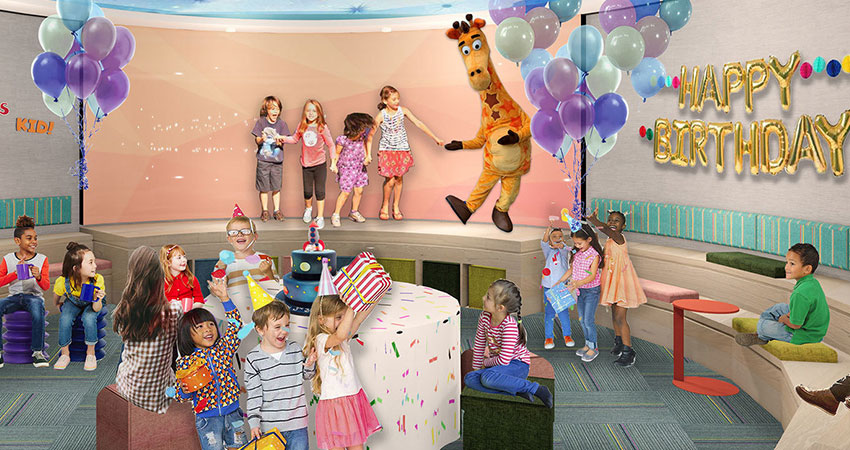Children are making their toy lists for the holiday season and this year it goes beyond the traditional buying experience. Major retailers like Target, Walmart and Disney are reimagining ways to showcase popular toys and provide a more interactive experience than stores of the past.
Scott Webb, CEO of Avionos said the toy industry is seeing the emergence of digital consumption, including augmented reality toys and growth in children driving viral unboxing videos.
“It really changes how children are discovering toys and the way they are influenced to make those purchases,” said Webb.
The State of the Toy Industry
Retail sales of toys generated $21.6 billion in 2018, down 2% from $22 billion in 2017, according to research by The NPD Group. The decline came after four years of growth in the toy industry.
“After the liquidation of Toys R Us last year, there was a great deal of speculation about what would happen to the industry, with some predicting double-digit declines,” said Juli Bennett, vice president and toy industry advisor for The NPD Group. “Overall, a 2% decline is a solid performance after such a significant shift in the retail landscape. It’s also worth noting that 2018 sales were slightly higher than 2016, which experienced mid-single digit growth.”
Target and Disney announced a partnership to create a store-within-a-store at 25 locations, as well as online collaboration. Customers can shop from an assortment of more than 450 Disney items, including 100 products previously available only from Disney stores.
Toys R Us also plans to open experiential stores in Houston, TX and Paramus, NJ this fall, looking to recapture some of its old retail magic.
“What Target is doing with Disney is creating niches in the market,” said Webb. “The store-in-a-store concept uses Target as the fulfillment mechanism, whether online or in-store purchases.”
Webb added Toys R Us is much less focused on dominating retail and more about reinventing the brand as an experiential.
Walmart partnered with media and technology company eko to launch the Walmart Toy Lab, using its website for the 2019 holiday season at WalmartToyLab.com. It’s a free, online interactive experience that invites kids to test out popular toys from their tablet or computer. Children can step into the Walmart Toy Lab and become toy testers through a workshop.
Walmart’s Toy Lab leverages eko technology to reinvent traditional catalogs and YouTube’s unboxing videos.
“Being a retailer isn’t simply about selling items anymore – it’s about creating an experience for our customers,” said Ann Marie Kehoe, vice president of toys for Walmart in a statement. “The Walmart Toy Lab is a way for us to create a digital experience for kids to really see our hottest toys in action as we enter the holiday season.”
Ivy Sheibar, chief brand officer for eko, said KidHQ is filling a gap left behind by shuttered toy stores and old-school catalogs, and in the process reinventing how brands connect with consumers. KidHQ invites kids to choose what happens next throughout the experience rather than letting them passively consume content.
Jaysen Gillespie, vice president and head of analytics and data science for Criteo, said consumers who used to shop at Toy R Us haven’t really developed strong loyalty to a replacement retailer. Preferences range from Walmart, Target and Amazon to local mom-and-pop retailers. However, a clear majority of consumers are willing to consider all options.
“If you’re Walmart, Target or Amazon, this past year was your chance to try and lock those toy shoppers down,” said Gillespie. “Holiday 2018 was chaotic with Toys R Us leaving the space. However, in 2019, consumers have developed relationships with replacement retailers who might seal that loyalty this holiday season.”
During holiday 2018, Amazon launched its very first toy catalog in the absence of Toys R Us. Other retailers such as Kohls, Walmart and Target sent their catalogs as well.
Can Toys R Us Make a Holiday Comeback?
Target announced it is joining forces with Toys R Us’ parent company, Tru Kids, to help power its ecommerce site. Toys R Us recently relaunched the site with new videos and articles on the latest toy trends and brands, as well as in-depth product reviews and customizable toy lists that tie into Target.com for list purchases.
CNBC reported that Tru Kids CEO Richard Barry, fomer chief merchandising officer for Toys R Us, said Target was ultimately tapped to power the website because of its already impressive toy business, strong supply chain and clear understanding of the category. “We spoke to a lot of different folks and we went through the process,” Barry told CNBC. “What inspired me about Target was their investment in the category.”
The new ecommerce site will go beyond product. There is a hope it will become a resource for parents who are not only looking for the latest toys but also educational tools for their kids.
“By partnering with Target while also opening pilot retail locations, Toys R Us is setting out to demonstrate that the omnichannel experience matters more than ever,” said Gillespie. “Stores like Walmart and Target can provide an enormous catalog of toys online. But a lot of toy discovery takes place in a store, where a consumer can see and touch the products.”
Gillespie said the Toys R Us brand will always represent that sense of wonder in the toy shopping experience. Consumers rely on digital channels for convenience, but still crave in-store experiences with their families. Retailers that offer both will have a significant advantage among competitors this holiday season.
“This partnership with Target is a smart way for Toys R Us to test its business model with little risk,” said Gillespie. “If this beta testing works to their advantage, Toys R Us will have the opportunity to go out to investors and landlords and reestablish themselves.”
Gillespie said Target is the more immediate winner between the two brands, as it is front and center during the transaction process. With a good experience, shoppers might logically make future toy purchases directly from Target.com.
He described this holiday season as “do or die” for the iconic brand to re-establish itself before the nostalgic loyalty factor fades away.
“If Toys R Us can still draw from online traffic on the strength of its brand, especially via free or organic sources, and if the brand can demonstrate strong sales in the Texas and New Jersey pilot stores, the case can be made for expansion of Toys R Us 2.0,” Gillespie said.
Geoffrey, the well-known mascot for Toys R Us made an appearance in the form of Geoffrey’s Toy Box last holiday season, which featured a collection of brands at pop-up stores in nearly 600 Kroger grocery stores.
Toys R Us announced the closure of its more than 800 U.S stores in 2018 while trying to work out a plan to save at least 200 of them if it couldn’t find a buyer. It made plans to liquidate 180 stores under both Toys R Us and Babies R Us banners as part of the restructuring process.
“Toys are one of the most experiential products in the retail space,” Webb said. “Customers tend to build emotional connections with them and because of that, retailers should take advantage. It’s a shame that Toys R Us never created a play area where kids could try the toys.”
Webb pointed to American Girl and Lego concept stores as successful retail environments that have embraced live play.

